The Swedish Army on the eve of the Northern War. Allied Strategy and Sweden
On the eve of the war with Russia, Denmark and Saxony, the Swedish Empire (the so-called Kingdom of Sweden and its possessions in the period from 1561 - after the conquest of Estonia, to 1721) was one of the great powers of Europe and had a strong army and fleet.
In the course of the 30-year war (1618 — 1648), the brilliant military actions of the Swedish military leaders ensured Sweden an outstanding role in Europe. In the Wesshala Peace, Western Pomerania with the port of Stettin, some part of Eastern Pomerania, the right to the Bay of Pomerania with the coastal cities, came under the control of Sweden. The Swedes now dominated the mouths of all the rivers of fragmented Germany and most of the coast of the Baltic Sea. According to the results of the Danish-Swedish war 1643 — 1645 (it was part of the 30-year war), the Bremsebru world was signed. According to it, Sweden received the islands of Gotland and Ezel and also two areas on the Norwegian border: Jamtland and Heriedalen. In addition to these territorial concessions, the Swedes were exempted from customs duties when passing their ships through the Sound. In addition, the Danes, as a guarantee of the above concessions, gave Sweden the province of Halland for 30 years.
Then Denmark was defeated in the 1657 — 1658 war. In the Danish city of Roskilde, a peace treaty was signed, according to which Denmark suffered huge territorial losses. The Swedes received three provinces in the south of the Scandinavian Peninsula - Skåne, Halland and Blekinge, the city of Trondheim. As well as Sweden, the islands of Bornholm (and later Vienna in the Sund Strait), Boguslen on Kattegat and Trondiem-Len on the Norwegian coast crossed. In addition, Copenhagen undertook not to let the “enemy” ships into the Baltic Sea. True, two years later Trondheim and Bornholm were returned to the Danes, but Sweden got the whole of Livonia around the world with Poland.
By the beginning of the 42th century, the Swedish Empire was experiencing not only a military-political, but also an economic upsurge. The country possessed a significant number of manufactories, including iron-making. On the basis of developed metallurgy, there was a military industry. Sweden controlled the most important strategic military points of the Baltic Sea, its garrisons were stationed throughout the Baltic States and in Northern Germany. In order to preserve the conquered territories and be able to expand their possessions, the Swedish kingdom contained powerful armed forces. The Swedish Naval Forces completely controlled the Baltic water area, they included 12 battleships, 38 frigates (according to other sources, 10 battleships and 13 frigates), a significant number of smaller warships, with 2,7 thousand sailors. The Swedish fleet had three squadrons, on the sides of their ships were up to 800 thousand guns. In addition, the Swedes could use for military purposes and merchant ships - up to XNUMX units. They could be armed with additional weapons, used as military transports, landing ships. Thanks to this armada, Sweden was able to transfer its army to almost any point in the Baltic states. Its opponents did not have such an opportunity, Russia and Poland did not have fleets in the Baltic, the Danish fleet was weaker than the Swedish Navy.
The Swedish military planning system envisaged that a line of powerful fortresses along the borders of the Swedish empire in Northern Germany, the Baltic States and Finland with strong garrisons and powerful artillery could withstand the first blow of an enemy army, gain time for the reinforcement of the Swedish army. These same fortresses could become a bridgehead for the concentration of the main Swedish armed forces to invade foreign territory. On the border with Russia, such fortresses were Narva, Yamburg (Yam), Noteburg (Oreshek), Nyenskans, Kexholm (Korela), etc. The main forces of the Swedish army were located in the metropolis.
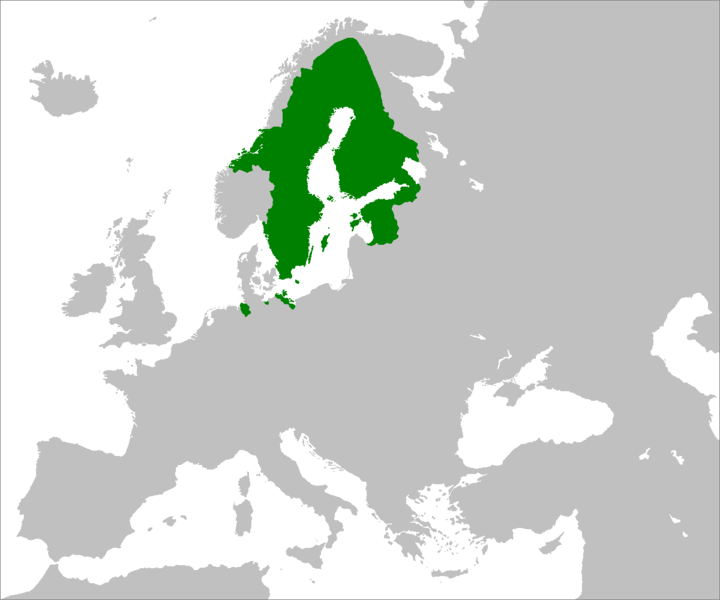
Swedish Empire in 1658 year.
Development of the swedish army
Since the days of the 30-year war and the military reforms of King Gustov II Adolf (1611-1632), the Swedish army was considered invincible in Europe. Sweden had a small standing army since the end of the 16 century, and in addition, in the event of war, militia was called. The Swedish army had a great military experience and was the brainchild of King Gustav II Adolf "The Lion of the North." It was the oldest, second only to the Netherlands, the permanent army of Europe. If the European armies were mostly mercenary, then the Swedish army, even before the “Leo of the North” reform, was formed from the middle of the 16 century on the basis of the principle of compulsory military service and selective conscription. Each rural community was obliged to expose a certain number of men. Of these, a special commission selected the soldiers according to the recruitment lists. This ensured a homogeneous national composition of the army, which was more morally stable, disciplined, unlike mercenaries. Under Gustav-Adolf, the country was divided into nine territorial districts. In each district, a “big regiment” was formed, numbering in 3 thousand people. Each large regiment was divided into three "field regiments" with eight mouths each. The shelves were stationed, each in its own clearly defined place. Every tenth peasant was to be recruited. Such a system allowed Sweden to have a fairly strong army in 27 thousand people in peacetime. By the time Gustov-Adolf died, the Swedish army had 23 infantry and 8 cavalry regiments.
Gustav Adolf also laid the foundations for linear tactics: instead of the deep construction that was adopted in the armies of European countries, the Swedish musketeers built only 3 ranks and pikemen 6 ranks. Musketeers used volley fire, and pikemen used their weapons not only in defense, but in the offensive. Field artillery was divided into heavy and light.
Military reform of Charles XI
Later, a system of settled troops was developed in Sweden. King Charles XI (1660 - 1697) in the 1680-s carried out a radical reform of the armed forces, which further increased their combat power. The system, when every tenth peasant or small artisan was called to the army, was extremely unpopular in the country, and it was hard for the state’s treasury to maintain a standing army. Karl XI did not want to burden the national budget, but at the same time the country needed a well-prepared, standing army. A settled system of recruiting the armed forces was introduced. The essence of the system was that the main expenses for the maintenance of a standing army were covered by the revenues of state and private land holdings. For this purpose, a special military land cadastre was created in advance; it took into account the ownership of peasant communities and private farms, which were used to maintain soldiers and officers. In turn, communal and private lands were divided into plots of the same yield, income from one plot of land should have been enough to support one soldier. One such site united a group of peasant farms - a company. Each "company" was supposed to contain one soldier-infantryman. For this, the farms were exempted from taxes. In addition, each soldier was allocated a plot of land where his dwelling was.
The cavalry was completed almost as well. The rider and his horse contained one or more holdings, for which they were taxed. The officers were given a land plot with the estate as a salary; its size and profitability depended on the position of the owner. A similar system was partially extended to the Navy. Thanks to these reforms, the Swedish empire had 38 thousand permanent troops, plus in the provinces - about 25 thousand in garrison and other service. In the same period, built a new military harbor - Karlskrona ("Charles Crown"). This system of territorial militia recruitment of the army of Sweden remained until the end of the XIX century. Thus, in peacetime, a significant part of infantrymen, cavalrymen and sailors were engaged in farming, removing significant pressure on the country's treasury. Armament, a horse (with cavalrymen), uniforms were on the farm, and the soldier could at any moment go on a campaign. Ammunition, other army equipment, ammunition were located in a warehouse at the mouth of the company captain. The training of soldiers was carried out by attracting to the annual monthly military gatherings, which took place after harvest.
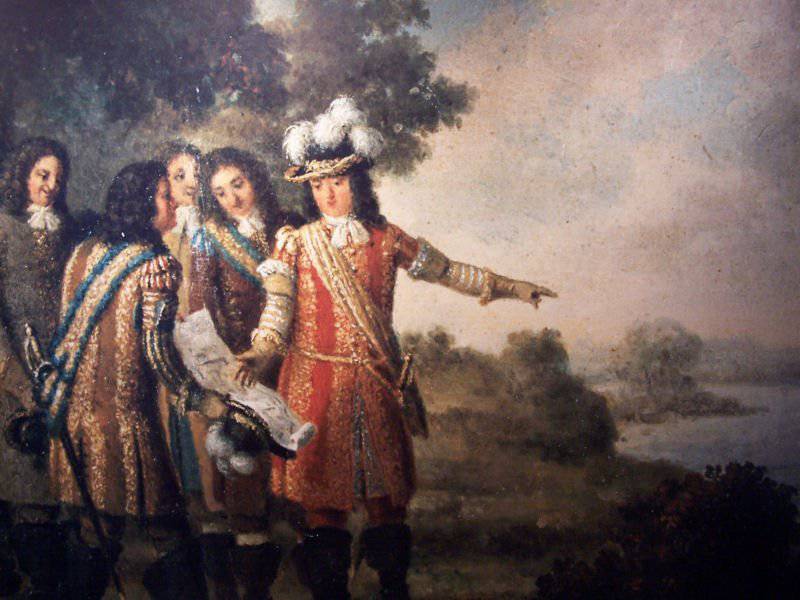
Founding of Karlskrona.
Swedish Army before the Northern War
When Karl XII ascended the throne (1697 - 1718) in peacetime in Sweden there was about 60 thousand army. In wartime, the strength of the army increased with the help of recruitment kits. In addition to the standing army, which was completed by the above method, in Sweden there were a few mercenary troops - from the mercenaries recruited the royal horse guards (Brabant) and artillerymen.
It was one of the most advanced military machines that were created in human stories. It was reinforced by the religious component. The morale of the Swedish army was very high - the soldiers and officers considered themselves invincible. This idea was based on a special religious attitude, which was based on the Protestant doctrine of Divine Predestination. This attitude was supported by regimental pastors, who comforted the wounded and dying, supervised the way of life and the performance of religious ceremonies by soldiers. The Protestant priests suggested fatalism to the military (in fact, there was a programming process for indifference to death). For example, during the storming of enemy positions, the soldiers should not have tried to hide, they were instructed to go on the attack in full growth. Supporting his flock and on the battlefield, the priests themselves often died. The most important evidence of God's favor with Sweden, the king, and the army were victories - and the Swedish army was used to winning, going from victory to victory. The soldiers were convinced, and they were sure of this, that the Swedish army was sent by God to punish heretics, apostates and sinners, dishonest and unholy rulers, who started the war against Sweden without a fair reason. To maintain this myth, pastors resorted to biblical episodes. For example, during the war with Russia, the Swedes were compared with the ancient Jews who are at war with the pagans. The Protestant religion was also needed to maintain cruelty to the enemy among the soldiers and officers: the words “punishment” and “revenge” during the Northern War did not leave the language of the pastors. They drew their inspiration from the terrible scenes of the Old Testament, where the ancient Jews exterminated not only people, but even their cattle, dogs, and all living creatures. In this regard (psychological attitude), the Swedish army resembles Hitler's Wehrmacht.
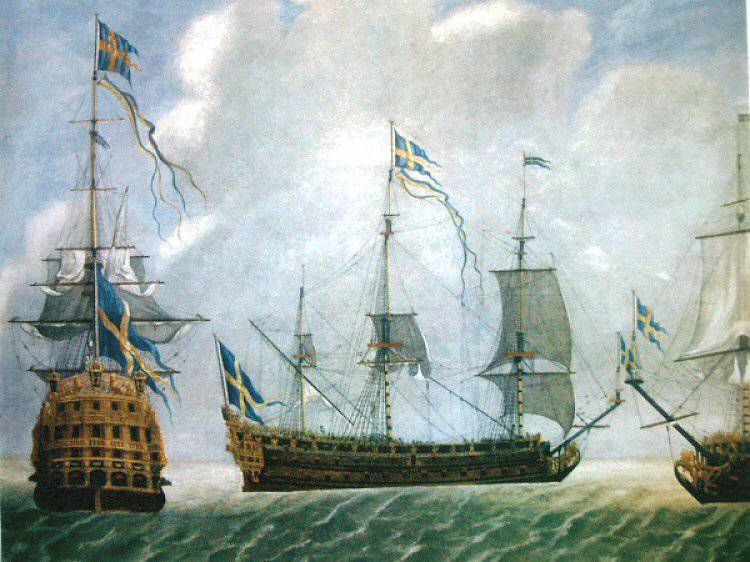
The war responded to the psychology of the Swedish nobility. For nobles, war was a source of glory, reward, enrichment, and the world often turned into material need, boredom and obscurity. These were the real descendants of the Vikings, a peaceful life was just boring. This idea was perfectly expressed by the famous Swedish commander Löwenhaupt: "In war and abroad, even the smallest pleases me more than the so-called joys, to which I, with shame and vanity, at home, in my homeland, kill time." The Swedish nobleman Gustav Bunde said: “Many knights found themselves and showed their abilities, which they supported the dignity of their class, while otherwise they would have had to live in a nonentity”.
For the rapid collection of troops, well-designed mobilization plans were developed, which ensured the rapid deployment and concentration of the main forces at a command-selected point for dispatch to the provinces on the southern shore of the Baltic Sea. The plans provided the amount of time needed for the transition, rest, determined the place of rest of the moving troops. As a result, Sweden was ahead of its opponents in the mobilization deployment of troops. This happened at the beginning of the Northern War.
The army was well trained and armed, the soldiers are brave and hardy. It was headed by an outstanding commander of his time, Karl XII. He was distinguished by determination and speed of action. Unlike the leaders of the enemy's armies, who adhered to a methodical strategy, Karl was not afraid to quickly and freely maneuver large forces, to take risks (this was also facilitated by the presence of a powerful fleet). He could suddenly strike where he was not expected, to impose a battle on favorable terms. Beat the enemy one by one. Karl XII was an adherent of the strategy of Alexander the Great, trying to defeat the enemy in a decisive battle.
Karl was personally brave, it was a warrior king. When several paralyzing wills came to Stockholm at once News, along with the capture of Holstein by the Danish army, news came of the invasion of Augustus II troops in Livonia without declaring war and news of the alliance of the three great powers against Sweden. This horrified the Swedish Council of State, they began to propose stopping the war through negotiations. King Charles rose from his seat and said that he would wage war until complete victory over all opponents. The outbreak of the war dramatically changed the character of Karl, he immediately abandoned all the fun of youth and became a real ascetic. From now on, the king knew no luxury, no wine, no women, no games, no rest. He began to dress like a simple soldier, becoming a real monk in a soldier's jacket.
In the center of Stogolm among the monuments to many kings there is a monument to Charles XII.
The freedom to maneuver the Swedish army is explained not only by the presence of mobilization plans and a strong fleet, but also by the methods of supplying troops. Their provision was carried out not only by supplying supplies from the rear bases, but also at the expense of local resources (often robbery of the population). “The war fed itself” - the Swedish army used local resources for supply, but such a method required rapid movement, the occupied area could not contain troops for a long time. As a result, the Swedish army was not tied to supply bases.
The Swedes treated mercilessly not only to the enemy, his troops, but also the local population. In one of the letters to General Renshild, the Swedish king wrote: “All those who are slow in delivering (indemnity) or in general are guilty of anything should be punished severely and without mercy, and their homes burned ...” And then, the settlements where “you meet with resistance, must be burned, will the inhabitants be guilty or not. ” In another letter, he notifies his generals that if the enemy does not leave them alone, then it is necessary "to empty and burn everything around, in one word, to ruin the country so that no one can come to you." The king says that he acts in a similar way: “we are trying with all our might, and we also ruin and burn every place where the enemy appeared. Recently, in this way, I burned a whole city ... ”.
And here we see that extreme cruelty is generally characteristic of Western civilization. Methods of merciless terror against the civilian population were in service with the "enlightened Europeans" long before the appearance of the "blond beasts" of Adolf Hitler.
In the field of tactics in the Swedish army, they adhered to linear battle formations. The infantry was built on the battlefield in the 2-3 lines, cavalry regiments were usually located on the flanks of infantry formations. On the battlefield, the Swedish infantry fired at the enemy with volleys, and then resolutely went into a bayonet attack. The cavalry (dragoons and cuirassiers) bravely cut in the enemy's orders. Infantry, cavalry and artillery interacted closely. The main tactical device during the battle was a decisive attack by infantry on the central positions of the enemy. Usually the enemy could not withstand the blow of the sturdy and brave Swedish infantry, and the blow of cavalry completed the rout.
Two-thirds of the Swedish infantry units consisted of musketeers and a third of pikemen (soldiers armed with lances). But gradually all the infantry was armed with guns with bayonets. The cavalry was armed with pistols and broadswords, the dragoons also had muskets. Cuirassiers were protected by cuirass. The Swedish field artillery for the year 1700 was merged into one regiment with personnel in 1800 people. The regiment was armed with 8-m and 16-pound howitzers, 3-pound field guns.
As a result, the Swedish army was ready for war much better than the Russian. She was mobilized, well armed and trained, showed the highest fighting spirit, it was led by a talented young commander and experienced generals. The Russian army was in the process of reforming, the old traditions were broken, the new ones had not yet taken root. The great weakness of the Russian army was the fact that foreigners prevailed in its high command.
The swedish peaks sample.
Allied and Swedish military plans
The general plan of the war of the allies - Denmark, Saxony, Russia was reduced to a consistent attack on the Swedish territories in Northern Germany, the southern Baltic, and Karelia. Gradually seize strategic fortresses, cities, points. The Russian command was going to act in Ingermanlandia and Karelia - to return to Russia the lands lost in the results of the Troubles of the beginning of the 17 century, access to the Baltic Sea. They understood perfectly the strategic importance of the fortresses in Ingermanland and Karelia and the Swedes. They were the "keys" to Livonia and Finland.
A specific action plan was developed on the basis of the allied treaties concluded with Saxony and Denmark. The Danes and Saxons were to speak first, and Russia after the conclusion of peace with Porto.
Preparation for war in Russia tried to keep secret. When the Swedish resident in Moscow Kniper Kron asked to explain the Russian military preparations, the creation of a regular army, he was informed that after the disbandment of the Strelets army there was no infantry left in Russia, and the country had to be ready for war with the Ottoman Empire. The secrecy of the preparatory activities is indicated by the fact that even the governor of the front-line Pskov and Novgorod did not warn about the proximity of the start of the war. The object of the first strike of the Russian army was chosen Narva. The success of the outbreak of war was associated with the simultaneous strike of the three powers, but from the very beginning this plan was disrupted.
In Sweden, there were mobilization plans that allowed in a short time to transfer the army to the threatened area. In addition, there was a project in which Novgorod, Pskov, Olonets, Kargopol, Arkhangelsk were to become Swedish. Thus, Sweden threw Russia further into the continental areas, from its possessions in the Baltic, dealt a powerful blow to trade rivals (Russian trade through Arkhangelsk was destroyed). The Swedes were going to conduct decisive offensive campaigns against each enemy individually. Denmark was considered the most dangerous adversary (she had a fleet), they planned to concentrate the main efforts of the army and navy at the initial stage of the war against her. At this time in the Baltic States, the Swedish fortresses had to stubbornly defend the forces of other enemies and wait for the arrival of the main forces.
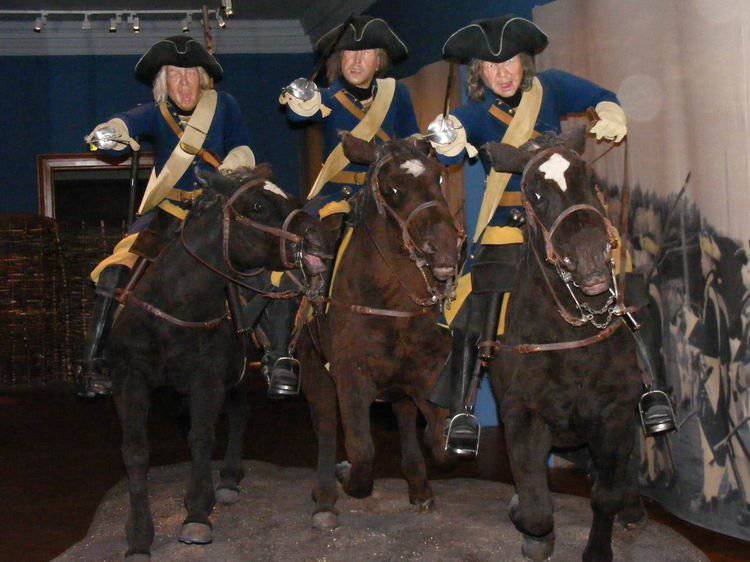
Swedish cavalrymen.
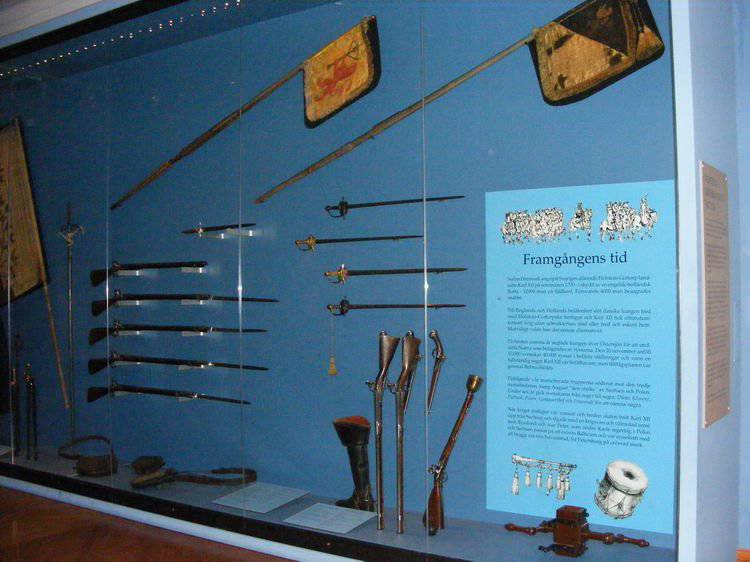

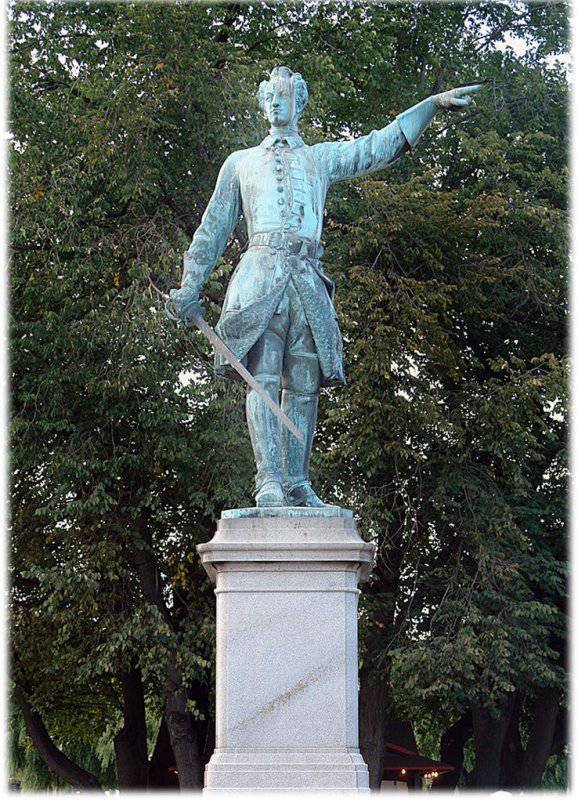
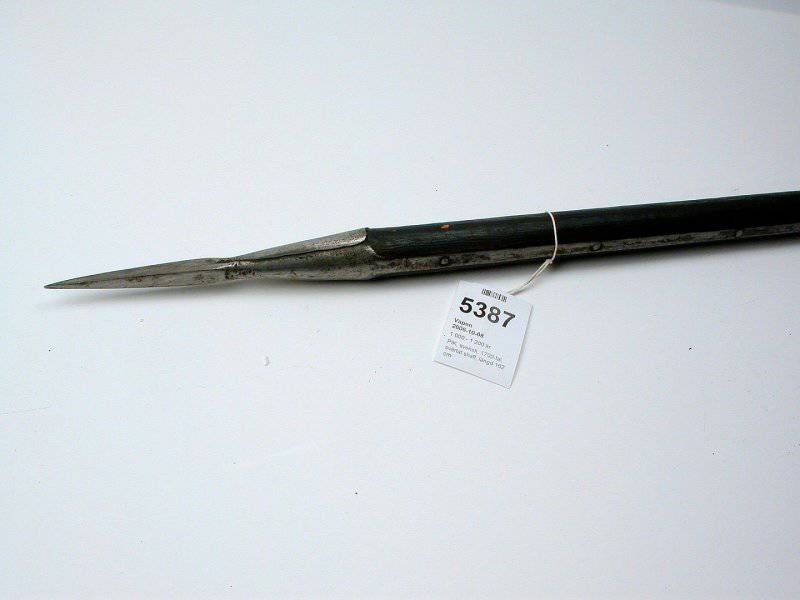
Information